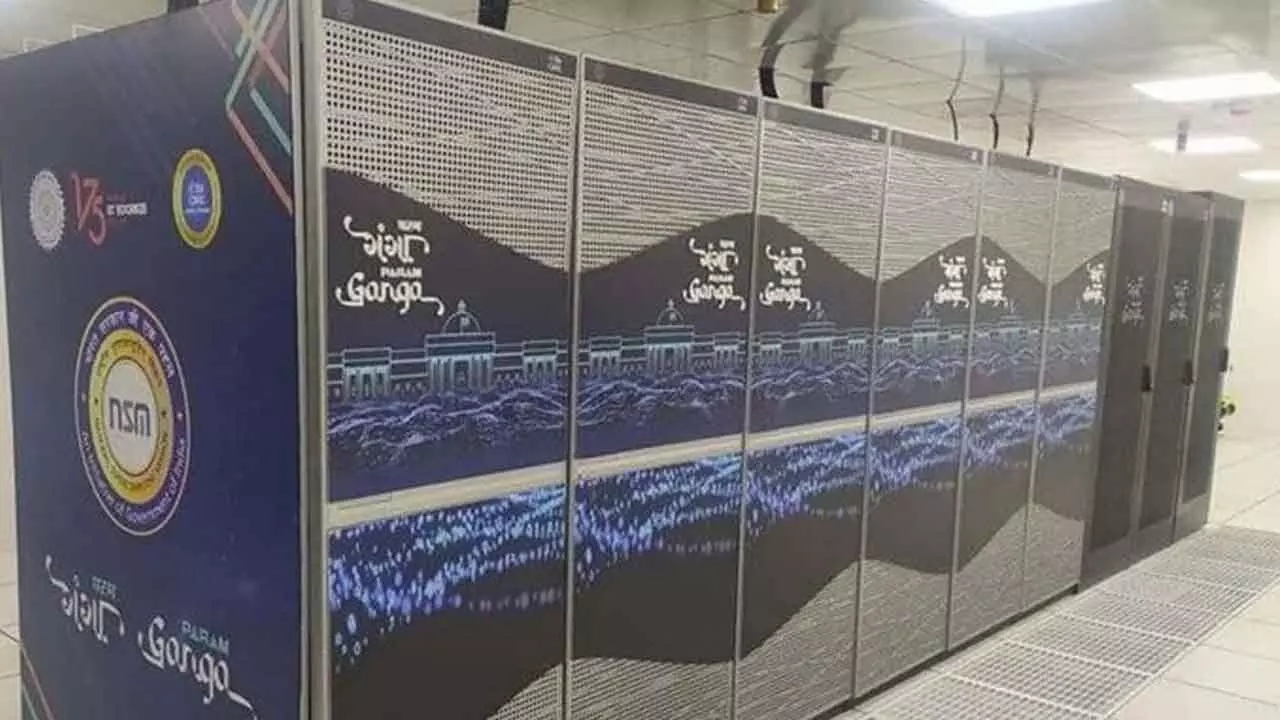From Param Shivay to Airawat: How India’s Supercomputing Journey Is Powering Ahead
India’s National Supercomputing Mission (NSM) is fast transforming the country into a global supercomputing hub, with indigenous innovation at its core
From Param Shivay to Airawat: How India’s Supercomputing Journey Is Powering Ahead

As the next phase targets complete indigenization and greater AI capacity through AIRAWAT, NSM is not just building machines—it’s laying the foundation for self-reliant scientific and technological leadership
The National Supercomputing Mission (NSM) is a flagship initiative by the Government of India to empower the country with high-performance computing (HPC) capabilities. Launched in 2015, the mission aims to enhance India’s technological prowess in supercomputing, foster research and development (R&D), and support scientific advancements across academia, industry, and government sectors.
The Mission envisages empowering our national academic and R&D institutions spread over the country by installing supercomputers of various capacities. Access to these supercomputers is provided through the National Knowledge Network (NKN). The NKN is another program of the government which connects academic institutions and R&D labs over a high-speed network.
Academic and R&D institutions as well as key user departments/ministries would participate by using these facilities and develop applications of national relevance. The Mission also includes development of highly professional High-Performance Computing (HPC) aware human resource for meeting challenges of development of these applications. HRD activities in this area are steered through five training centres at Pune, Kharagpur, Chennai, Palakkad, and Goa to expand the awareness and familiarization of supercomputing with college students and researchers.
Current status & achievements
Under NSM, as of March 2025, a total of 34 supercomputers with a combined compute capacity of 35 Petaflops, have been deployed across various academic institutions, research organizations, and R&D labs, including prominent institutions like IISc, IITs, C-DAC, and other institutions from Tier-II and Tier III cities of the country under NSM. The supercomputing systems commissioned under NSM have achieved an overall utilization rate of over 85 per cent, with many systems exceeding 95 per cent, demonstrating a high level of usage and efficiency in their computational capacity
The contribution of these supercomputing systems to the Research and Development (R&D) sector has been highly impactful, facilitating over 10,000 researchers, including more than 1,700 PhD scholars from over 200 academic institutions and R&D labs across the country. These supercomputing systems have supported research in critical domains such as Drug Discovery, Disaster Management, Energy Security, Climate Modeling, Astronomical Research, Computational Chemistry, Fluid Dynamics, and Material Research. NSM has created opportunities for researchers from Tier II and Tier III cities to conduct research by providing access to state-of-the-art supercomputing facilities. These researchers have completed over 1 crore compute jobs and published more than 1,500 papers in leading national and international journals. Additionally, more than 22,000 individuals have been trained in HPC and AI skills. Start-ups and MSMEs are leveraging these supercomputing resources to advance their HPC-driven projects.
In parallel, under the NSM, C-DAC has developed the indigenous high-speed communication network, "Trinetra," to enhance data transfer and communication between computing nodes, strengthening India’s supercomputing capabilities. Trinetra is being implemented in three phases: Trinetra-POC, a proof-of-concept system to validate key concepts; Trinetra-A (100 Gigabits per second), a network with advanced connections, successfully deployed and tested in the 1PF PARAM Rudra at C-DAC Pune; and Trinetra-B (200 Gigabits per second), an upgraded version with improved capabilities, set to be deployed in the upcoming 20PF PARAM Rudra supercomputer at C-DAC Bangalore.
In 2024, the Prime Minister dedicated three PARAM Rudra supercomputers to the young researchers, scientists and engineers of nation facilitating advanced studies in physics, earth sciences, and cosmology. These supercomputers have been deployed in Pune, Delhi and Kolkata to facilitate pioneering scientific research. PARAM Rudra supercomputers are built using indigenously designed and manufactured HPC servers, known as "Rudra”, along with an indigenously developed system software stack. “Rudra” Server is the first of its kind in India which is at par with globally available other HPC class Servers.
The Government has initiated a project AIRAWAT for providing a common compute platform for AI research and knowledge assimilation. This AI computing infrastructure will be used by all Technology Innovation Hubs, research labs, scientific community, industry, start-ups and institutions under the NKN. The Proof of Concept (PoC) for AIRAWAT will be developed with 200 petaflops mixed precision AI machine which will be scalable to a peak compute of 790 AI petaflops. The AIRAWAT has secured 75th position in Top 500 Global Supercomputing List declared at International Supercomputing Conference (ISC 2023), Germany putting India on top of AI Supercomputing nations worldwide.
In 2022, Indian Institute of Science (IISc), Bengaluru has installed Param Pravega, one of the most powerful Indian supercomputers. Param Pravega having a supercomputing power of 3.3 petaflops, is the largest supercomputer that has been installed in an Indian academic institution.
In 2019, the Prime Minister inaugurated National Supercomputing Mission's first indigenously build supercomputer ‘Param Shivay’ at Indian Institute of Technology, BHU, Varanasi. In 2024-25, additional 45 PF of computing infrastructure creation is envisaged using indigenously developed server and technologies.

